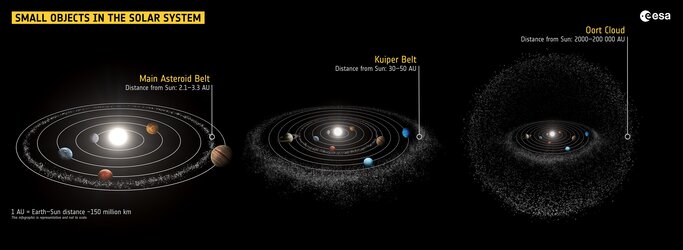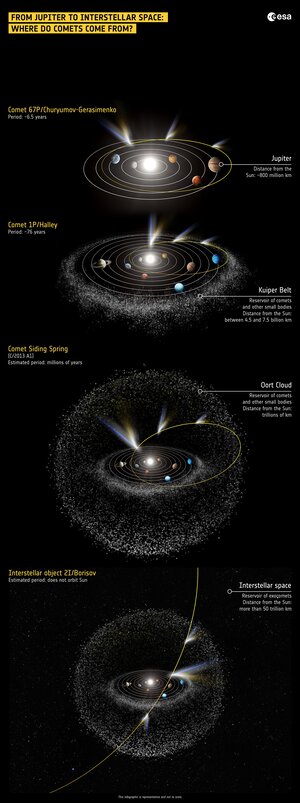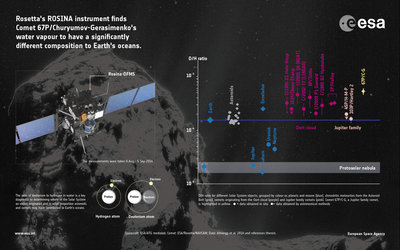
Kuiper Belt and Oort Cloud in context
Illustration showing the two main reservoirs of comets in the Solar System: the Kuiper Belt, at a distance of 30–50 astronomical units (AU: the Earth–Sun distance) from the Sun, and the Oort Cloud, which may extend up to 50 000–100 000 AU from the Sun.
Comet 1P/Halley, visited by ESA's Giotto mission, is thought to originate from the Oort Cloud, having been drawn closer to the Sun over time. Comet 67P/Churyumov–Gerasimenko, the focus of ESA’s Rosetta mission, originally came from the Kuiper Belt. The comet is now in a 6.5-year orbit around the Sun between the orbits of Earth and Mars at its closest and just beyond Jupiter at its furthest. ESA's Comet Interceptor will be the first mission to target a 'dynamically new' comet that visits the inner Solar System for the first time, coming from the Oort Cloud or even the interstellar space lying beyond it.





